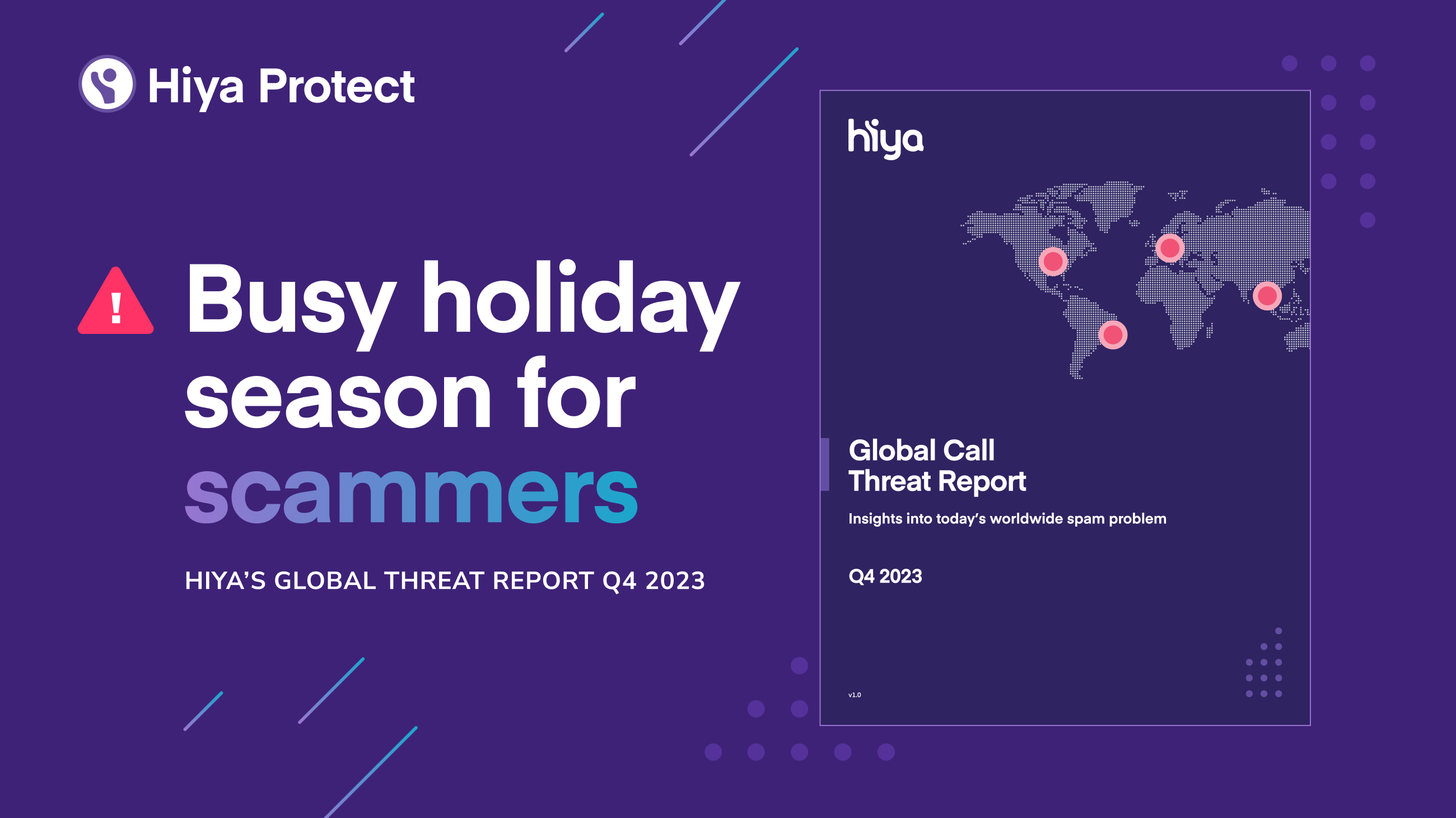
Late November not only kicked off the holiday season, but scammers kicked into high gear to take advantage of consumers preoccupied with holiday shopping. Popular in Q4 were phone scams related to package deliveries and calls impersonating Amazon and other major retailers.
That was one of the findings in the just-published Q4 Global Call Threat Report. The report reveals spam and fraud rates in 39 countries worldwide and details the types of scam calls that are the most prominent in select countries. It also includes special sections on the top 10 phone scams in the world and the US states with the highest and lowest spam rates.
Download the Q4 2023 Global Call Threat Report
Key findings
In the fourth quarter of 2023, Hiya observed 7.3 billion unwanted calls globally — that’s more than 81 million spam calls every day — up from 6.55 billion in Q3. Much of that increase was due to new users being added to the Hiya network, but there was also a seasonal impact. The number of spam calls peaked at 357 million the week of November 27, just as the holiday season started.
Worldwide, 25% of unidentified calls were spam, 19% nuisance, and 6% fraud.
Other key findings include:
-
Worldwide – Countries that received the most spam calls per person per month in Q4:
-
Brazil – 24 per person per month
-
Hong Kong – 23 per person per month
-
Chile – 20 per person per month
-
US – 15 per person per month
-
Mexico – 15 per person per month
-
United States – Although the US’s spam rate is a relatively high 29%, only 1% of those unwanted calls are fraud, giving it one of the lowest fraud rates in the world. Most fraud calls in the US are blocked by the carrier at the network level, so they never reach the recipient’s phone. The most commonly reported scams in Q4 involved Medicare, insurance, taxes, Amazon, credit cards, relief (debt relief, tax relief, etc.), and payment platform apps.
-
Canada – Canadians receive significantly fewer spam calls each month than residents of the United States (4 per person in Canada vs. 15 per person in the US). While credit card and Amazon scams are popular in both countries, uniquely Canadian is the long-running air duct cleaning scam.
-
United Kingdom – UK residents also receive an average of only 4 spam calls per month. That’s low compared to the US and other parts of the world. Amazon scams and delivery scams were popular in the UK in Q4, as were HMRC tax scams.
-
Spain and France– In Spain and France, nearly half of the unidentified incoming calls are flagged as spam. France has a spam rate of 47% (the highest in Europe), and Spain’s spam rate is 46%. The most reported phone scam in Q4 in France impersonated the French electric utility company EDF Energy. In Spain, bank scams topped the list.
-
Germany – Of the seven featured countries in this report, Germany gets the fewest spam calls. Germans receive an average of only 2 spam calls per person per month. Germans also get a different mix of scam calls. Popular in Q4 were sweepstakes scams, PayPal scams, and “Hallo Mama” scams.
-
Brazil – Brazilians endure an average of 24 spam calls per month, significantly more than the six countries mentioned above. Banking scams were by far the most common type of phone scam in Brazil in Q4.
Report includes spam rates in US states
Hiya Global Call Threat Report also includes US state data. The report identifies the 10 states with the highest spam rates, as well as the 10 states with the lowest spam rates.
This quarter, Oklahoma and Ohio had the highest spam rates of any of the 50 states. Download the report to see which other states made the list.
Methodology
Data in the Global Call Threat Report is based on a representative sample of calls observed during Q4 2023 on the Hiya Voice Security Network, which includes Samsung Smart Call-enabled devices and the Hiya mobile app.
Spam is defined as unwanted calls and includes both fraud calls and nuisance calls. The spam flag rate represents calls that Hiya identified and flagged as “potential fraud” or “suspected spam.” Spam ratios represent the number of unwanted calls from non-contacts, which are calls from numbers not in an individual’s local address book.
Get the full report
Use the Global Call Threat Report to compare spam rates in 39 countries tracked by Hiya and learn more about the top phone scams in specific countries. The report can be downloaded below.
.png?width=2400&height=1254&name=LinkedIn-Post-Graphic%20(4).png)



